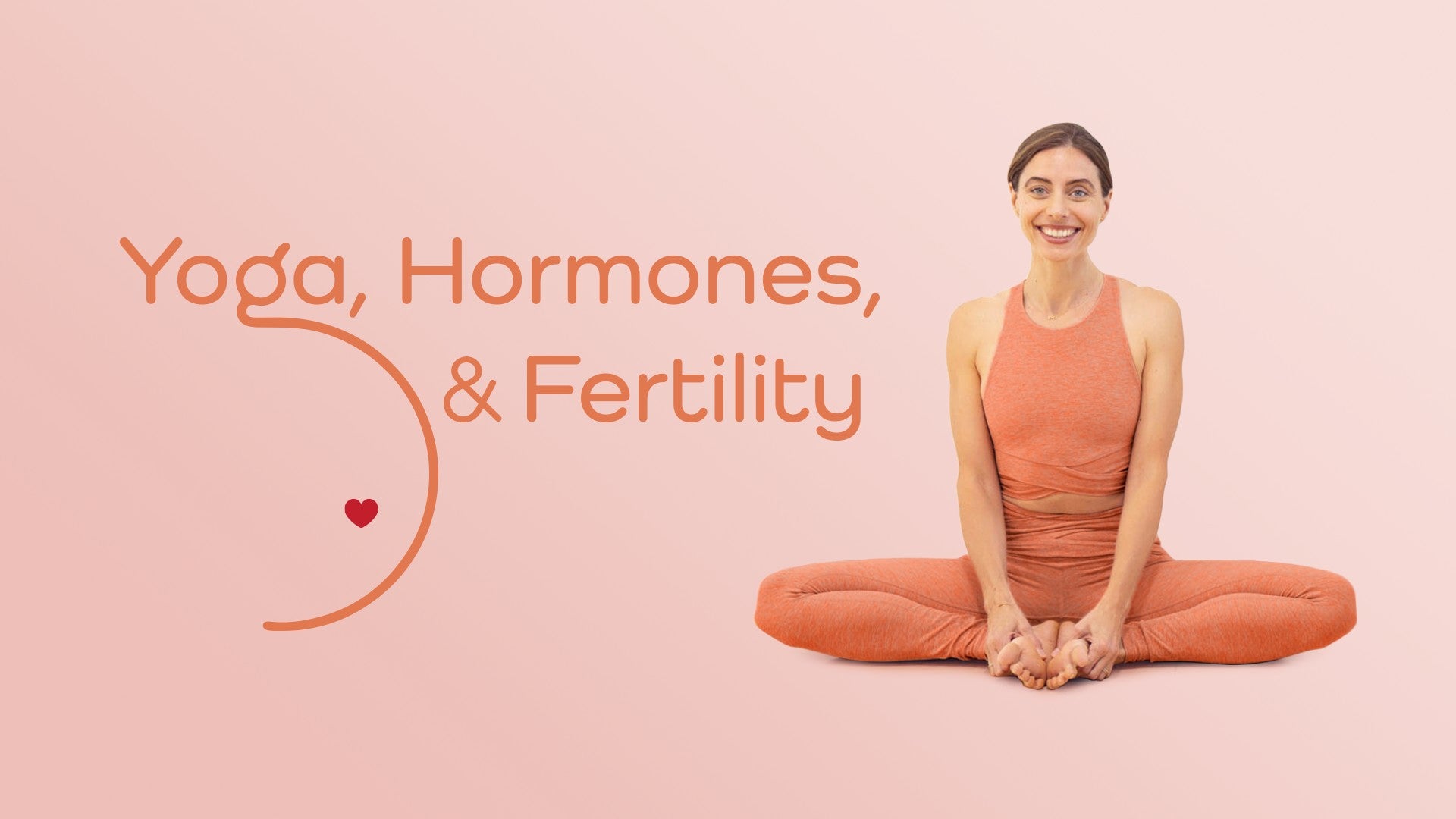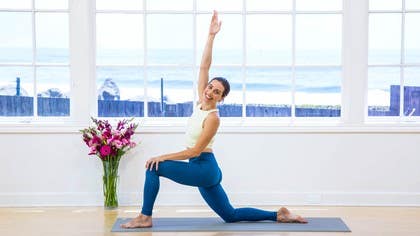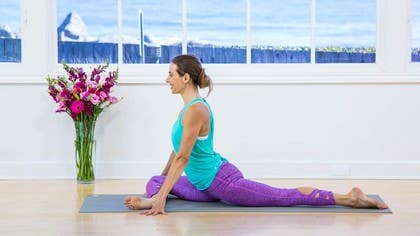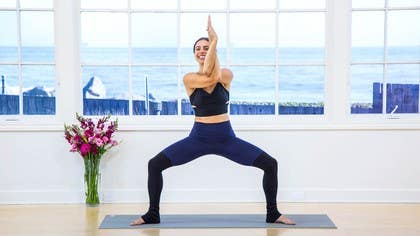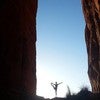Description
About This Video
Transcript
Read Full Transcript
Welcome. Today's practice is about boosting blood flow to the uterus, the ovaries, the reproductive system. And in Chinese medicine, we say that this system is kind of governed by the heart and the pericardium, and the pericardium is the outer casing of the heart. And the reason that we view it this way is because the heart and the pericardium we relate to the hypothalamic pituitary axis. The heart in Chinese medicine is like the Shen, the spirit, the mind. And the hypothalamic and pituitary axis are really, that's where all of the hormones are, that signals for all hormone production. So in an effort to access the energetics of the heart and the pericardium, we're going to be opening up the heart through back bends. And the heart channel really goes from like this area. The pericardium comes here and crosses, and then the heart comes all through here. And so opening up in this area, getting some range of motion in the shoulders, that will be really helpful to stimulate those energetics. And then we're also going to do some back bends on the stomach. So in a very practical way, we'll just be accessing that area, and we'll counter that with some forward folding. So we're going to start on our backs, and so we'll just lie down. You're going to need a block for this practice, so have one handy, and we'll start out with the block. So grab ahold of your blocks, and we'll lie down on our backs. We'll just lift our hips up, and you can place the block at the low height to start. Some of you may be able to raise it up higher. And then we're just going to straighten one leg, and you should feel kind of some opening here. And this is just around the area of the ovaries, but then the uterus is a little bit more in the center. Ovaries are on the side. I'm going to go a little higher for myself. The block will go right under the sacrum. You can do one leg at a time, especially if there's a lot of tension here, just to start opening up this area. You may be comfortable doing both. Maybe try it out, and then if you need to back off and do one at a time, you can always go back. Particularly if you have a lot of tension in the hip flexors, you spend a lot of time sitting in chairs, you may have a lot of sensation here. Just start to guide the breath into this area. Deep breathing, just guiding the breath into that area, allowing for space and blood flow. You can always just spend some time here, separate from this practice. And we'll just bend the knees, press the feet to lift the hips and move the block off to the side. And we'll just draw the knees into the chest, kind of compressing that area a little bit. And then we'll rock up to seated. And then we'll come into malasana. So we'll just separate the feet. Some of you may want to use a blanket under your heels here. This isn't the easiest pose for everyone. Just rock forward onto your toes, but then reach out through the heels. And if possible, you'll let your heels come to the floor. If not, then you'll bring a blanket under your heels. And you can either keep your hands forward in front of you to help you balance, or you can bring your hands to prayer position. So for here, we're just kind of creating a little bit of compression in that area. The idea is that we kind of create pressure here to kind of stop the blood flow, so that when we release it, all the blood kind of rushes into that area. It's really just putting pressure in that area, giving the body the signal that we're working on the ovaries, the uterus. So have that intention. Our chi really follows our intention. And then from there, leaning forward, lifting the hips up to the ceiling, just coming into an easy forward fold. You can take panangustasana, or just grab a hold of your elbows, your choice. The hamstrings are a little tight. Just bend the knees a bit, and rock from side to side. And then from here, we'll roll up to standing, and bring our feet together, coming to the front of your mat, hands to prayer position, first three in a mascare. On your exhale, release the arms down alongside the body. With inhale, we'll reach the arms up overhead. Exhale, hinge at the hips and fold forward. Inhale, lengthen the spine. Exhale, set the hands, step back, or jump right to chaturanga, and then we'll lower down. Inhale, you can take cobra or up dog, and exhale back to downward facing dog. And in downward facing dog, we'll stay here for three to five breaths, inhaling and exhaling through the nose. If you need to pedal out your feet for the first one, feel free to do so. Nice, smooth, even breathing through the nose. And then with the end of the exhale, we'll look forward and step or jump your feet to your hands. Inhale to lengthen, exhale to fold, and inhale to come all the way up. Exhale, samastitihi. Inhale, reach the arms up overhead. Exhale and fold forward. Inhale and lengthen. Exhale, step or jump to chaturanga. Inhale, cobra or up dog, and exhale, downward facing dog. Really guiding the breath to the heart, and then the heart really pumps the blood throughout the whole body. So really important for blood flow as well. Reach the heels towards the floor, tops of the thighs back, deep breathing. And then at the end of your next exhale, look forward and step or jump to your hands. Inhale as you lengthen, exhale to fold, and inhale to come all the way up. Exhale, arms down alongside the body. One more time. Inhale, arms reach, inhale and fold. Inhale to lengthen. Exhale, step or jump to chaturanga. Inhale, cobra or up dog, deep breath into your chest, into your heart, and exhale, downward facing dog.
So even breaths in and out through the nose, make each one count. Notice the calming effect of the breath on the mind, how it relaxes your nervous system. And of your next exhale, look forward and bring your feet to your hands. Inhale to lengthen. Exhale to fold, and inhale to come all the way up. And exhale, returning to standing. Surya Namaskar B, bend your knees, sit your hips back. Inhale, chair pose. And exhale, fold forward, straightening the legs. Inhale and lengthen. Exhale, step or jump to chaturanga. Inhale to upward facing dog. And exhale to downward facing dog. Let's just step the right foot forward inside the right hand, bring your left knee down to the floor, point your left toes back, and stay on your fingertips for a moment. You may need to adjust your right foot forward, and we're just going to sink the hips to stretch the left hip flexor. Again, really creating space in the front of your pelvis. Maybe bringing your right hand to the knee, lifting the left arm up. Little bit more space through that left side. And then set the left hand down, curl the back toes under, pivot the left heel down to the floor, press the outer edge of the left foot to the floor, and inhale, let's come up into warrior one. And then with your exhalation, bring the hands down to the floor. Step back, shift forward and lower. Here in up dog, you'll probably feel a bit of a difference between your left side and right. So when you're ready up dog. And then exhale to down dog. And we'll take the left foot forward and bring the right knee down to the floor, point your right toes back, and stay on your fingertips, maybe adjust your left foot forward if you need to. Really letting the hips sink down so you open up that right side body, the front of the right side of your pelvis. And we'll bring the left hand to your left knee, inhale and raise your right arm up.
Lots of length. And then release the right hand down, curl your back toes under and pivot your right heel to the floor. Press the outer edge of the right foot and straighten your right leg. Press down into your left heel and inhale, coming up. Warrior one. And then exhale, release, set the hands down, pick up your back heel, step back and lower. Chaturanga. Exhale, cobra or up dog. And exhale, downward facing dog. Deep breathing. And at the end of your next exhale, look forward and bring your feet to your hands. Inhale to lengthen. Inhale and fold. Bend your knees, sit your hips back. Inhale to chair, rutkatasana. And exhale to samastiti. And let's open up to our side for uttitatrikonasana. Take the feet about one leg's distance apart, arms out to the T. Turn your right toes out and your left toes angled in just a bit. Press your right leg almost straight. So if you have a tendency to hyperextend, you're going to want to keep just a tiny bend in your knee. Lift the kneecap up the thigh. Drop the shoulders down the back. Inhale. And with exhalation, we're going to hinge out over the right leg. So pull the right hip crease back, lengthen the right side body. And you can take the hand anywhere along that shin and then start to rotate the left shoulder over the right. And maybe turn to look up to the left thumb if that feels okay for your neck. Any variation of trikonasana, sometimes we like to use a block next to the right shin. Or you may practice with your fingertips on the floor as well.
Just find the place where you can find your comfortable seat, but move just a bit into your discomforts. Deep breathing. And with your next inhalation, you'll come up and parallel your feet. Then turn your left toes out and your right toes angled in just a bit. Drop your shoulders down. Inhale. Reach your arms and then exhale. Pull your left hip crease back and lean out over your left leg, setting the hand to the shin, a block or the floor. And really expand the breath into the chest. Pull the shoulders back. Find that slight rotation through the torso, rotation up towards the ceiling. And then with inhalation we'll come up and exhale, parallel the feet. Let's take the hands to the waist. We'll go right into prasarita padottanasana A. Roll the shoulders back. Lift the chest up. Tip the head back and gaze down the edge of your nose. With exhalation we'll hinge at the hips and fold. Set your hands flat on the floor. Inhale. Look up, lengthen. And exhale. Fold. Walking the hands back. So the elbows are over the wrists, more or less. Hands are shoulder distance apart. And breathing deeply. We'll stay here for roughly five breaths. See how long you can make your breath. Slowing down the breath. And next inhale we'll straighten the arms. Look up and lengthen. Exhale. Bring the hands to the waist. Inhale. Come all the way up. And exhale. See position. Inhale. Reach the arms out to the side. Exhale. Interlace your fingers. So we're going to start some of that back bending type energy. Roll the shoulders back. Lift the chest up, creating lots of space through the front of the chest, the heart space. Tip the head back. And then with exhalation we'll fold forward here. And as you fold the arms will start to come up overhead. And head will start to reach down towards the floor. And again, just taking long, deep breaths in and out through the nose. And again, exhale. Now on your next inhalation we'll come up. And exhale, release. And we'll step to the front of our mat. Hands to prayer position. Take the hands down alongside the body. Inhale.
We'll reach the arms up overhead. Exhale. Hinge at the hips and fold forward. Inhale and lengthen. Exhale. Step back. Shift forward. And we're going to lower all the way down to your stomach. And so we'll come into Shalabhasana. We'll point the toes back and maybe bring the feet together. This can be done with the feet apart. I typically prefer the feet together, legs together. But if you practice it differently, feel free to use your way. Inner thighs lifting up to the ceiling. And just try to find contact with the pubic bone and the front hip bones. So your lower abdomen is touching the floor. And then we'll take the arms down alongside the body with the palms open to the ceiling. And on an inhale, we're going to roll the shoulders back, lift the chest up, and then start to lift the legs. And it's more about length than it is about height. And really find contact with the pubic bone and the hip bones on the floor. And breathe. Lengthen the back of the neck. Two more breaths. With each inhale, find a little more length. And each exhale, really press the pubic bone and hip bones down. And then we'll exhale and lower that. Release it and just turn your head to either side. One resting breath. We'll do that again in a moment. And then bringing the feet together, ankles in. On an inhale, we'll reach up, lift the shoulders, lift the chest. Keep the back of the neck nice and long. You can gaze to the tip of your nose or just past it. Continue to breathe. Pubic bone and hip bones, press the floor. Take one more deep breath in. And then exhale and turn your head to the other direction. We'll do this one more time. Setting up for our third inhale and coming up, lifting the chest, pulling the shoulders back, keeping the legs nice and straight, strong, deep breathing, opening the space of the chest. Gaze past the edge of the nose. Two more breaths. Try to make the breaths a little longer, a little smoother. And then exhale and release. We'll take this right into Dhanurasana just to stay with that back bend energy. So we'll bend the knees and the knees will go apart about hip distance and the feet can come together and you can reach back for your ankles or your feet, whatever you can grab a hold of. The heels can come in to start. And then with inhalation, just start to kick the legs straight, lifting the chest up and then start to lift the feet to the ceiling, allowing the knees to rise up from the floor and breathe. Again, pubic bone and front hip bones can stay on the floor completely here. About five breaths. Long, deep, smooth breaths. And then exhale and release. And we'll just do that one more time. Turn your head to either side or you can bring your forehead to your hands on the floor. You may notice your heart is beating a little faster now. Bend your knees, reach back for your ankles or feet. Inhale, start to kick the legs towards straight. Of course, you're not going to straighten most likely. And then press the pubic bone, front hip bones, lift the feet up, open up through the chest and breathe. Still gazing past the edge of the nose. One more deep breath, lift a little higher and exhale, release. Bring your hands down to the floor, straighten your legs and then press your hands, lift your hips up and back coming into a child's pose. You can rest your forehead to the floor or a block. And from here, we'll come up to seated and we'll straighten the legs out in front of us. Just coming into a dandasana, legs are straight. You're up on your sitting bones, low back lifted. Just take the hands alongside the hips, chest lifts towards the chin. Let the chin stays level to the floor. A few deep breaths in and out through the nose. And then we'll reach the arms up overhead. Inhale.
And exhale, we'll forward fold for Paschimottanasana. You can take your toes, you can bring the hands outside the shins, on the shins, whatever your preference is. Inhale, again, straighten, let the chest and exhale fold. Letting the head and neck relax. Starting to cool down now. Let the breath be a little more relaxed. It's still long, deep, but it should start to relax now. And then we'll inhale, straighten the arms. Exhale and release. And then we'll lie down on our backs for Savasana. So you'll straighten your legs out. Lie down flat on your backs. Let your palms be open to the ceiling. Just take a moment to bring the shoulders underneath you. Let the chest be nice and open. The feet will flop open, legs slightly turning out from deep in the hip sockets. And take a moment just to acknowledge that area, the uterus, the ovaries, whole area between your hip bones. Maybe visualize some white light there. Feel a tingling sensation. Bringing blood flow to this area is so important for moving the blood so we don't get stagnation. For rebuilding lining, uterine lining. For helping to stimulate the growth of eggs or follicles and preparation for ovulation. Silence. You're welcome to stay here as long as you'd like. Resting is really important. You're ready to come out, then we'll start to reach the fingers and toes, bringing small movements into the hands and feet.
Then we'll stretch the arms up overhead and we'll bend the knees and roll over to our right side. Then from there we'll press our left hand down to the floor and come up to a comfortable seated position. Just take the hands to the heart space and prayer position, gently bow the head. Thank you for joining me today, namaste.
Yoga, Hormones, and Fertility: Balance Your Hormones
Comments
You need to be a subscriber to post a comment.
Please Log In or Create an Account to start your free trial.
